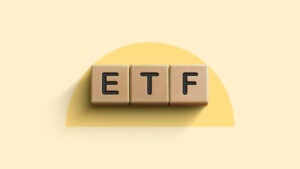Best health care ETFs: Top biotech, pharma and medical funds

If you’re looking to invest in the health care industry, buying a health care exchange-traded fund (ETF) is an easy way to get started without the hassle of analyzing individual companies.
With a health care ETF, you can buy a broad cross-section of the industry or even chop it into finer segments. Either way, you can find the group of stocks you want to own. An ETF also offers diversification, reducing your risk compared to buying individual stocks.
Health care presents significant avenues for growth, too. As people live longer than ever before, medicine has a host of diseases to fight, whether it’s cancer, heart disease, Alzheimer’s, stroke or others. And U.S. health care spending has been above-trend for decades. In 2023, the amount spent on health care hit $4.9 trillion, more than triple the health care expenditures of 2000, according to Peterson-KFF’s Health System Tracker.
So a health care ETF could offer an attractive way to invest in a resilient sector of the economy. Of course, the best investments for beginners also offer tons of options for all kinds of investors.
Here are some of the best health care ETFs based on their sub-sectors. (Data as of April 28, 2025.)
Types of health care ETFs
The health care sector is large, and it can be broken down into sub-sectors, depending on the exact kind of businesses within it. So you have multiple ways to invest in health care, and a health care ETF can give you exposure to these sectors:
- Broad health care
-
This grouping includes the many kinds of health care sub-sectors listed below, so you can get wide exposure to health care as a whole.
- Biotechnology
-
This sub-sector includes companies specializing in biotechnology and similar drugs. It’s an exciting field with the potential for explosive returns.
- Medical devices
-
This sub-sector focuses on providing medical devices, such as implants or other medical equipment.
- Health-care providers
-
This sub-sector includes companies that actually deliver care to individuals.
- Pharmaceuticals
-
This group includes companies that develop traditional drugs, as opposed to biotech companies.
So you have quite a few options to pick from, depending on exactly what you want. But if you want a cross-section of everything that’s health care-related, you’ll want to look at an ETF labeled as broad health care.
Best health care ETFs
1. Best broad health care ETF
Health Care Select Sector SPDR Fund (XLV)
This ETF tracks the Health Care Select Sector index, and includes health care companies in the Standard & Poor’s 500 index. The index includes companies in pharmaceuticals, equipment and supplies, health-care providers and biotechnology, among others.
- 5-year returns (annualized): 8.3 percent
- Expense ratio: 0.08 percent
- Dividend yield: 1.60 percent
2. Best biotechnology ETF
iShares Nasdaq Biotechnology ETF (IBB)
This fund tracks an index of biotechnology and pharmaceutical stocks listed on the Nasdaq stock exchange, with top holdings including Amgen, Gilead Sciences and Vertex Pharmaceuticals.
- 5-year returns (annualized): -0.2 percent
- Expense ratio: 0.45 percent
- Dividend yield: 0.30 percent
3. Best medical devices ETF
iShares U.S. Medical Devices ETF (IHI)
This ETF tracks an index of U.S.-listed stocks of medical device companies, including Abbott Laboratories, Intuitive Surgical and Boston Scientific.
- 5-year returns (annualized): 7.1 percent
- Expense ratio: 0.40 percent
- Dividend yield: 0.45 percent
4. Best health-care providers ETF
iShares U.S. Healthcare Providers ETF (IHF)
This fund tracks an index of U.S.-listed providers of health care, including UnitedHealth, Cigna and Elevance Health.
- 5-year returns (annualized): 6.4 percent
- Expense ratio: 0.40 percent
- Dividend yield: 0.78 percent
5. Best pharmaceuticals ETF
iShares U.S. Pharmaceuticals ETF (IHE)
This ETF tracks an index of U.S.-listed pharmaceutical companies, and it includes the stocks of Eli Lilly, Johnson & Johnson and Royalty Pharma.
- 5-year returns (annualized): 7.5 percent
- Expense ratio: 0.39 percent
- Dividend yield: 1.64 percent
What to look for in an ETF
When investing in ETFs, it’s useful to look at a few aspects of each ETF so that you actually buy what you intended to buy. Here are three key things to look for:
- The sub-sector — Each sub-sector may respond differently to conditions in the industry. For example, drug companies respond differently than health-care providers to certain developments in the industry, since both rely on different funding sources. So you need to know what kinds of companies you want to own.
- The investment track record — You’ll also want to know the track record of the ETF. Has it outperformed the industry, or has it underperformed during a period of strength? The track record can give you some idea of what to expect from the ETF.
- The expense ratio — Also, pay attention to the expense ratio, which tells you how much it costs to own the fund annually as a percent of your total investment in it.
Finally, it’s worth noting that larger ETFs tend to charge lower expense ratios because they can spread the costs of running the fund across more assets. So the cheapest funds may often be the largest funds, and a low expense ratio is a key measure of what makes a top ETF.
The best brokers for ETFs can help you find attractive funds with strong long-term returns.
Bottom line
If you’re looking for exposure to health care, you have several options depending on the sub-sector you want to tie your money to. If you don’t know which to buy, you can invest in an ETF focused on the broad industry and gain total exposure. While you don’t necessarily need to know a lot to succeed with an ETF, some investors stick to broadly diversified index funds, such as those based on the S&P 500 index, and leave trading and fund-picking to the pros.
— Bankrate’s Rachel Christian contributed to an update of this article.
Editorial Disclaimer: All investors are advised to conduct their own independent research into investment strategies before making an investment decision. In addition, investors are advised that past investment product performance is no guarantee of future price appreciation.
You may also like






